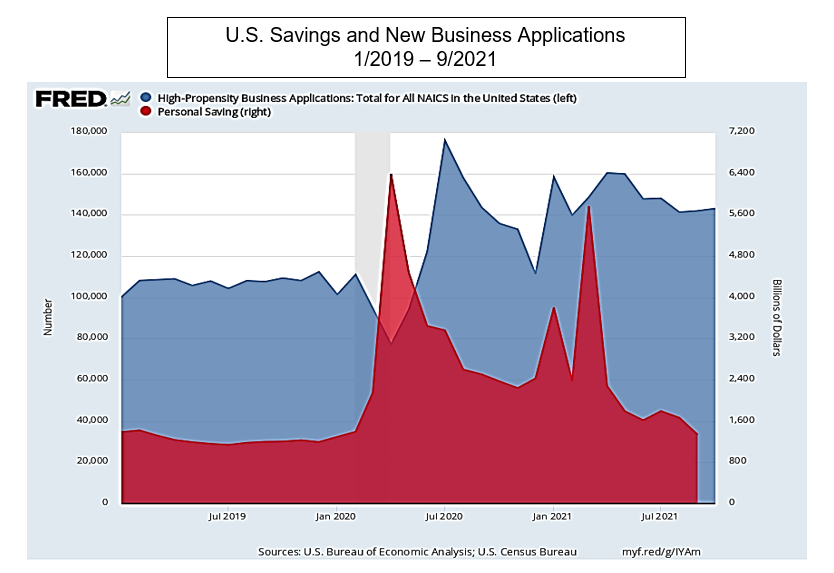- | Labor Markets Labor Markets
- | Expert Commentary Expert Commentary
- |
The Search for Workers is Complicated by New Businesses Taking Flight
A recent "60 Minutes" segment zeroed in on Greenville, South Carolina, a burgeoning city not far from where I live, and examined how COVID-19 has brought dramatic changes to work and employment patterns. In one interview, CBS correspondent Bill Whitaker asked Greenville restauranteur Carl Sobocinski about the well-publicized difficulties in finding help. For various reasons, it seems that a lot of people are just not interested in coming back to work.
Sobocinski responded with a different take on the situation: The people he was interested in hiring are in fact working. It seems clear that many of them have started their own businesses. As it turns out, America is experiencing an explosion in small business start-ups, and COVID relief is part of the story.
I’ve written previously about an underacknowledged uptick in entrepreneurship. Just how big is it? And how much will it matter in the long run?
New business start-ups are required to register themselves with the Bureau of the Census and obtain a government-issued official business number. Because of the procedure, the Census bureau can track and report what is going on nationally and by state, county, and business category. In the process, it identifies firms with plans to hire workers as “high propensity” applicants. The accompanying chart reports monthly data for 2005 through December 2021.

The post-COVID surge is obviously large and without precedent in the 16-year series. In December 2021, there were 418,000 new business applications, up 20% from the previous December. As the chart here shows, that level of activity was ongoing for most of 2021. Just to make the counting easier, let’s call the monthly number 400,000. That gives is 4.8 million start-ups across the year. Each of the new businesses has at least one proprietor working there. So, in 2021, at least 4.8 million people became self-employed, at least part-time, and we can assume that many or most of them didn’t go to work for someone else.
Now, back to December 2021. The U.S. labor force counted 85.3 million workers and people seeking work among its ranks. The number starting businesses is better than 5% of the workforce. To add another bit of perspective, as of November, there were 11 million job openings waiting to be filled reported by the Bureau of Labor Statistics. The number of new business startups was a bit less than half the number of open jobs.
We seem to have a capitalistic economy on steroids. Did COVID have anything to do with this?
It appears so. Given that more than $3 trillion in newly printed dollars were distributed to citizens nationwide, it only makes sense that some of them would tuck the COVID largesse into a savings account and use it later to fund a new business. The possibilities are seen in the next chart, which uses Federal Reserve data to show the level of personal savings in the economy mapped into the count of new business applications.

I call attention to the initial lag, which was during the time when the economy largely shut down. Afterward, the savings level and new business applications move apace.
When we see all those “Now Hiring” signs and wonder why labor markets don’t seem to be working so well, we should remember that anyone trying to put workers on a payroll is competing with people who want to be on their own payroll.
Of course, we all know that that there is high failure rate for new businesses. Perhaps businesses started under unique, government-aided circumstances will perform better or worse, but according to some researchers, 20% fail in the first year. By the end of the second year of existence, another 10% percent will have failed. And after 10 years, just 30% of the batch will remain among the living.
Even with that being the case, we can know that the COVID business startup revolution will leave a mark on the future economy.
Photo by David Zaitz